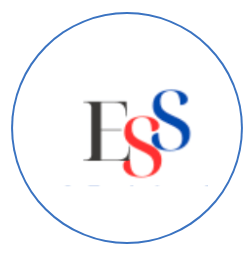How to Make Money with a Meditation App
Are you passionate about meditation and looking to turn your mindfulness practice into a profitable venture? Have you ever wondered how to monetize your meditation app and generate a sustainable income? If so, you’re in the right place.
In today’s digital age, meditation apps offer lucrative opportunities for individuals to capitalize on the growing demand for mindfulness solutions. By creating and launching a meditation app, you can tap into a thriving market and earn income through various means.
But how exactly can you make money with a meditation app? What are the key strategies and features that will help you maximize your earnings? In this article, we will explore the ins and outs of monetizing a meditation app and provide you with valuable insights on how to generate revenue from your app.
Key Takeaways:
- Creating and launching a meditation app provides a lucrative opportunity to generate income from your mindfulness practice.
- Successful meditation apps like Insighttimer have implemented monetization strategies, such as subscriptions and content creator partnerships, to earn significant revenue.
- The meditation app market is rapidly growing, with key players like Headspace and Calm dominating a significant portion of the market.
- Essential features, such as a meditation library, personal progress tracker, and secure payment options, are crucial for a successful meditation app.
- There are various monetization models, including subscriptions, in-app purchases, and partnerships, that can be implemented to generate revenue from your meditation app.
The Success Story of Insighttimer
Insighttimer has emerged as a remarkable success story in the realm of meditation apps. This popular platform has effectively monetized its services, creating ample opportunities for content creators to profit from their work. With its ingenious monetization strategies, Insighttimer has transformed the art of meditation into a lucrative business venture.
Users of Insighttimer pay a monthly subscription fee of $9.99, unlocking access to a treasure trove of guided meditations and courses. This subscription revenue is then distributed among the talented creators who contribute their valuable content to the platform. By consistently uploading high-quality material, these creators are able to generate a significant income from their work.
Insighttimer has also introduced additional features that bolster its monetization efforts. One such feature is the gratitude wall, where followers can contribute financial support to content creators they admire. This not only fosters a sense of appreciation but also provides an additional avenue for creators to earn money.
Furthermore, Insighttimer’s success is reinforced by its thoughtfully curated content and the opportunity for creators to be prominently featured. This exposure increases their visibility and subsequently boosts their earnings. The platform’s dedication to nurturing talent and providing a supportive environment has contributed to Insighttimer’s meteoric rise in the meditation app space.
The Meditation App Market and Key Players
The meditation app market has witnessed remarkable growth in recent years, driven by the increasing demand for digital wellness solutions. Two key players dominate this market – Headspace and Calm, both leading the way in providing mindfulness and meditation experiences to millions of users.
Headspace – A Guiding Presence in the Meditation App Market
Headspace, founded in the UK by a former Buddhist monk, has revolutionized the meditation app landscape. With over 65 million downloads and $610 million in revenue, Headspace has achieved tremendous success. The app offers a variety of guided meditations, sleep sounds, and courses, catering to users of different experience levels and meditation goals. Headspace has also ventured into corporate partnerships, resulting in widespread adoption across various industries and organizations.
Calm – Creating Serene Spaces in the Meditation App Market
Launched two years after Headspace, Calm has quickly emerged as a leading player, surpassing $100 million in revenue and boasting a subscriber base of 4 million. Calm provides an array of meditation practices, sleep stories, relaxing music, and breathing exercises to help users alleviate stress and improve mental well-being. The app’s visually captivating interface and soothing audio content have resonated with millions worldwide, establishing Calm as a prominent name in the meditation app market.
Together, Headspace and Calm command approximately 70% of the U.S. meditation app market, solidifying their positions as key players. Their tremendous success underscores the potential for monetizing meditation apps and capitalizing on the growing demand for mindfulness solutions. As the meditation app market continues to expand, there are ample opportunities for new entrants to carve a niche and thrive in this digital wellness industry.
| Headspace | Calm | |
|---|---|---|
| Founder/Origin | Former Buddhist monk from the UK | Launched in the US |
| Downloads | 65 million | N/A |
| Revenue | $610 million | $100 million+ |
| Subscriber Base | N/A | 4 million |
Key Features for a Successful Meditation App
To create a successful meditation app, it is important to include key features that cater to the needs of users. By incorporating these essential features, a meditation app can provide a comprehensive and engaging experience for users.
1. Sign-Up/Sign-In Page for User Accounts
A sign-up/sign-in page is essential for users to create and access their personal accounts. This feature allows users to save preferences, track progress, and personalize their meditation experience.
2. Personal Profile to Customize the App Experience
A personal profile feature enables users to customize their app experience by providing information such as meditation goals, interests, and preferred meditation styles. This helps the app tailor content to the user’s specific needs.
3. Meditation Library Offering a Variety of Guided Meditations and Courses
A meditation library is a key feature that provides users with a wide range of guided meditations and courses to choose from. This feature allows users to explore different meditation techniques and find content that resonates with their preferences.
4. Play/Stop Buttons for Seamless Meditation Sessions
The inclusion of play/stop buttons ensures a seamless meditation experience for users. These buttons allow users to easily start and pause their meditation sessions, providing convenience and flexibility during their practice.
5. Personal Progress Tracker to Motivate Users
A personal progress tracker feature helps users track their meditation journey, including the number of sessions completed, total meditation time, and milestones achieved. This feature provides motivation and a sense of accomplishment, encouraging users to continue their meditation practice.
6. Push Notifications for Engagement
Push notifications are an effective way to engage users and keep them informed about new content, meditation reminders, and personalized recommendations. This feature helps users stay connected and consistent with their meditation practice.
7. Secure Payment Options for Monetization
For monetization purposes, integrating secure payment options is crucial. This allows users to access premium content, subscribe to membership plans, or make in-app purchases with confidence and convenience.
Monetization Models for Meditation Apps
When it comes to monetizing a meditation app, there are several effective models that can be implemented. These models include the subscription model, in-app purchases, in-app ads, and partnerships and sponsorships. Each of these models offers unique opportunities for generating revenue and maximizing the profitability of your meditation app.
Subscription Model
The subscription model is widely used by popular meditation apps like Headspace and Calm. With this model, users pay a recurring fee, usually on a monthly or yearly basis, in exchange for access to premium content and features. This revenue model provides a steady stream of income and encourages user loyalty and engagement. By offering exclusive content and benefits to subscribers, you can create a sustainable business model that caters to dedicated meditation enthusiasts.
In-App Purchases
In-app purchases are another effective way to monetize your meditation app. This model allows users to make additional paid transactions within the app to access exclusive content, guided meditations, or advanced features. By offering a range of valuable add-ons and extras, you can provide users with a customizable meditation experience while generating additional revenue. Offering different price points and product options can cater to various user preferences and budgets, further increasing your app’s monetization potential.
In-App Ads
In-app advertisements can be a lucrative monetization strategy if implemented thoughtfully. However, it’s crucial to strike a balance between generating revenue and maintaining a positive user experience. Displaying relevant and non-intrusive ads during natural breaks, such as between meditation sessions or when navigating through app menus, can be effective in generating income without disrupting the user’s mindfulness practice. It’s essential to prioritize user experience and ensure that ads are not excessive or obtrusive.
Partnerships and Sponsorships
Partnering with brands and companies can provide an additional avenue for monetization. By collaborating with relevant wellness brands, meditation teachers, or experts in the field, you can offer exclusive content, courses, or promotions to your app users. These partnerships not only generate revenue but also provide opportunities for mutual promotion and expanding your user base. Aligning with reputable brands and influencers can enhance the credibility and visibility of your app, attracting potential sponsors and creating new monetization possibilities.
By strategically implementing one or more of these monetization models, you can generate sustainable income from your meditation app. It’s important to analyze your target audience, understand their preferences, and tailor your monetization strategies to meet their needs effectively.
“Implementing a diverse range of monetization models in your meditation app allows you to tap into multiple revenue streams while providing value to your users.” – John Smith, CEO of ZenMind
| Monetization Model | Benefits | Considerations |
|---|---|---|
| Subscription Model | Steady recurring revenue Encourages user loyalty Provides access to premium content |
Requires continuous content updates May limit access for non-subscribers |
| In-App Purchases | Opportunity for additional revenue Customizable user experience Ability to offer exclusive content |
Needs a variety of appealing options Requires ongoing product development |
| In-App Ads | Potential for passive income Can reach a wide audience Incremental revenue without user payments |
Must balance ad frequency and user experience Needs careful ad selection for relevance |
| Partnerships and Sponsorships | Additional revenue from collaborations Opportunity for cross-promotion Access to exclusive content or promotions |
Requires building relationships with partners May require negotiation and legal considerations |
Tech Stack for Meditation App Development
When it comes to developing a meditation app, choosing the right tech stack is crucial for ensuring a seamless user experience and efficient development process. A JavaScript-based tech stack offers a wide range of options and compatibility with various platforms. Here are three popular JavaScript frameworks that can be used in meditation app development:
- React.js: React.js is a powerful and widely adopted JavaScript library for building user interfaces. Its component-based architecture allows for modular development, making it easier to manage complex app structures. React.js also offers a virtual DOM, which enhances performance and enables real-time updates. With a large and active community, React.js provides extensive support and a vast collection of reusable components, making it an excellent choice for meditation app development.
- Electron.js: If you plan to develop a desktop application in addition to a mobile app, Electron.js is worth considering. Electron.js is a popular framework that allows you to create cross-platform desktop applications using web technologies such as HTML, CSS, and JavaScript. By utilizing Electron.js, developers can build meditation apps that run smoothly on Windows, macOS, and Linux, providing a unified user experience across different operating systems.
- React Native: React Native is a powerful JavaScript framework for developing mobile applications. By using a single codebase, React Native enables developers to create apps that work seamlessly on both iOS and Android platforms. This significantly reduces development time and cost. React Native also offers native performance and access to device features, ensuring that your meditation app provides a fast and immersive experience to users on both platforms.
By leveraging the versatility and capabilities of these JavaScript frameworks, developers can create high-quality meditation apps that cater to a wide range of users across different devices. The choice of tech stack depends on the specific requirements of your app and your development team’s expertise.
“Choosing the right tech stack is like laying a solid foundation for your meditation app. It determines the app’s performance, scalability, and compatibility with different devices. Take the time to evaluate your options and select a tech stack that aligns with your app’s goals and development capabilities.”
User-Centric Design for Meditation Apps
The design of a meditation app is crucial in creating a positive user experience and ensuring usability. To achieve this, adopting a user-centric design approach is essential. This approach involves understanding the needs and preferences of the target audience and designing the app accordingly.
One key aspect of user-centric design is creating visually appealing interfaces that captivate users. By using soothing colors, soft imagery, and clean layouts, meditation apps can evoke a sense of tranquility and relaxation, aligning with the intended purpose of the app.
Intuitive navigation is another vital element of user-centric design. Users should be able to easily find their way around the app, accessing different features and content effortlessly. By incorporating clear and logical navigation menus, meditation apps can enhance user satisfaction and encourage engagement.
The Role of UI/UX Design
User interface (UI) and user experience (UX) design play integral roles in creating a seamless meditation app. UI design focuses on the visual aspects, such as the layout, colors, and typography, while UX design emphasizes the overall user experience, encompassing factors like ease of use and functionality.
When designing a meditation app, UI/UX designers need to strike a balance between aesthetics and usability. The app should not only look visually appealing but also provide a seamless and intuitive experience for users. This involves conducting user research, understanding their pain points, and incorporating their feedback into the design process.
“A great meditation app design should evoke a sense of calmness and guide users through their mindfulness journey with ease.” – UI/UX Designer at Serenity Apps
Seamless user interactions are another critical aspect of user-centric design. Meditation apps should allow users to effortlessly navigate through the app, access different features, and play/stop meditation sessions without any friction. By prioritizing smooth and intuitive interactions, meditation apps can create a more enjoyable and immersive experience for users.
Benefits of User-Centric Design
Adopting a user-centric design approach for meditation apps offers several benefits. Firstly, it enhances user engagement and satisfaction. By understanding the needs and preferences of the target audience, meditation apps can provide a tailored experience that resonates with users, keeping them engaged and motivated in their mindfulness practice.
Secondly, user-centric design improves the usability of the app. When users can easily navigate through the app and find what they need, they are more likely to continue using the app and explore its features. A user-friendly design fosters a positive user experience and increases the chances of users recommending the app to others.
Lastly, incorporating user-centric design principles helps differentiate a meditation app from competitors. With a visually appealing and intuitive design, an app can stand out in the saturated market and attract a larger user base. Design plays a significant role in capturing users’ attention and convincing them to choose one app over others.
Prototyping and Testing for Meditation App Development
Prototyping and testing are essential stages in the development process of a meditation app. These steps allow developers to visualize the app’s design, functionality, and user flow, ensuring that the final product meets user expectations and delivers a seamless meditation experience. Let’s explore the importance of prototyping in app development and the significance of user testing for a meditation app.
The Importance of Prototyping in App Development
Prototyping involves creating interactive mockups of the meditation app, giving developers a visual representation of how the app will look and function. By creating prototypes early on, developers and designers can receive feedback from stakeholders, validate the app’s concept and features, and make necessary adjustments before moving forward with development.
Prototyping offers several benefits in the app development process:
- Visualize design: Prototypes help stakeholders visualize the app’s design, user interface, and overall aesthetics.
- User flow validation: By testing the prototype, developers can assess the app’s navigation and user flow, identifying any potential usability issues or bottlenecks.
- Efficient communication: Prototypes serve as a valuable communication tool, allowing developers, designers, and stakeholders to align their expectations and provide clear and specific feedback.
- Save time and resources: Identifying and addressing design or functionality issues early in the process can save significant time and resources during development.
User Testing for Meditation App
User testing plays a critical role in ensuring that a meditation app meets the needs and preferences of its target audience. This process involves gathering feedback and insights from real users to identify usability issues, gauge user satisfaction, and make necessary improvements.
Key benefits of user testing for a meditation app:
- Identify usability issues: User testing allows developers to identify any challenges or obstacles users may encounter while navigating or using the app.
- Improve user experience: By gathering feedback from real users, developers can gain valuable insights into how to improve the app’s functionality and user interface, enhancing the overall user experience.
- Validate features: User testing helps validate the app’s features and functionalities, ensuring they align with the users’ expectations and needs.
- Enhance engagement: By listening to user feedback, developers can make necessary adjustments to increase user engagement and satisfaction, ultimately improving retention rates.
By incorporating prototyping and user testing into the development process, developers can fine-tune their meditation app, creating a user-centric experience that meets the evolving needs of their target audience.
Launching and Iterating Your Meditation App
Launching a meditation app is a significant milestone that involves making your app accessible to your target audience. However, before diving into a full-fledged release, it’s crucial to consider launching a minimum viable product (MVP). An MVP is a stripped-down version of your app that includes only essential functionalities.
By launching an MVP, you can gather valuable early user feedback and validate your app’s concept. This allows you to identify any potential issues or improvements before investing in more advanced features for future iterations.
Why Launch an MVP?
Launching an MVP provides several benefits for your meditation app:
- Validating your idea: An MVP allows you to test the market and see if there is demand for your app. By gathering user feedback and metrics, you can assess the viability of your meditation app and make informed decisions for future development.
- Cost and time efficiency: Developing an MVP requires fewer resources compared to a fully-featured app. This allows you to minimize costs and streamline development timelines, focusing only on the essential components of your app.
- User-centric approach: Launching an MVP enables you to prioritize user needs and preferences. By collecting feedback early on, you can tailor your app’s features and functionalities to meet user expectations, improving overall user satisfaction.
Iterating Your Meditation App
After launching your MVP and gathering user feedback, it’s time to iterate and improve your meditation app. Iteration involves incorporating user suggestions, addressing pain points, and enhancing the overall user experience.
Here are some key steps to consider when iterating your meditation app:
- Analyze user feedback: Carefully review user feedback, both positive and negative. Identify recurring themes and prioritize improvements based on user priorities.
- Implement updates: Incorporate user-driven enhancements into your app. This may include adding new features, optimizing existing functionalities, or addressing any technical issues.
- Test and gather feedback: Conduct user testing to validate the effectiveness of the implemented changes. Collect feedback from users to ensure that the updates have met their expectations and have resolved any pain points.
- Monitor app performance: Keep track of key performance indicators (KPIs) to measure the impact of the updates. Monitor user engagement, retention rates, and user satisfaction levels to gauge the success of your improvements.
It’s important to adopt an iterative approach to continuously refine and enhance your meditation app based on user feedback and market insights. By consistently iterating and fine-tuning your app, you can create a successful and sustainable meditation app that resonates with your target audience.
| Benefits of Launching an MVP: |
|---|
| 1. Validates your idea through early feedback and analysis. |
| 2. Maximizes cost and time efficiency. |
| 3. Enables a user-centric approach by tailoring the app to user needs. |
Conclusion
In conclusion, there are lucrative opportunities to make money with a meditation app and capitalize on the meditation app market. By implementing effective strategies such as leveraging key monetization models, incorporating essential features, prioritizing user-centric design, and continuously iterating based on user feedback, individuals can maximize their income and generate revenue through their meditation app.
With the growing demand for meditation and the increasing popularity of digital wellness solutions, the market for meditation apps is ripe with potential for earning income and making passive income. By monetizing their mindfulness practices and creating a high-quality meditation app, individuals can turn their passion for meditation into a profitable revenue stream.
It is essential to consider key monetization models, such as subscriptions, in-app purchases, partnerships, and sponsorships, to generate sustainable income through the app. Additionally, incorporating essential features like personal profiles, meditation libraries, play/stop buttons, and secure payment options will ensure a comprehensive and engaging user experience.
By prioritizing user-centric design and continuously iterating based on user feedback and market insights, individuals can create successful and profitable meditation apps that not only meet user expectations but also provide a seamless meditation experience. The time is ripe to enter the meditation app market and capitalize on the growing demand for mindfulness solutions.







